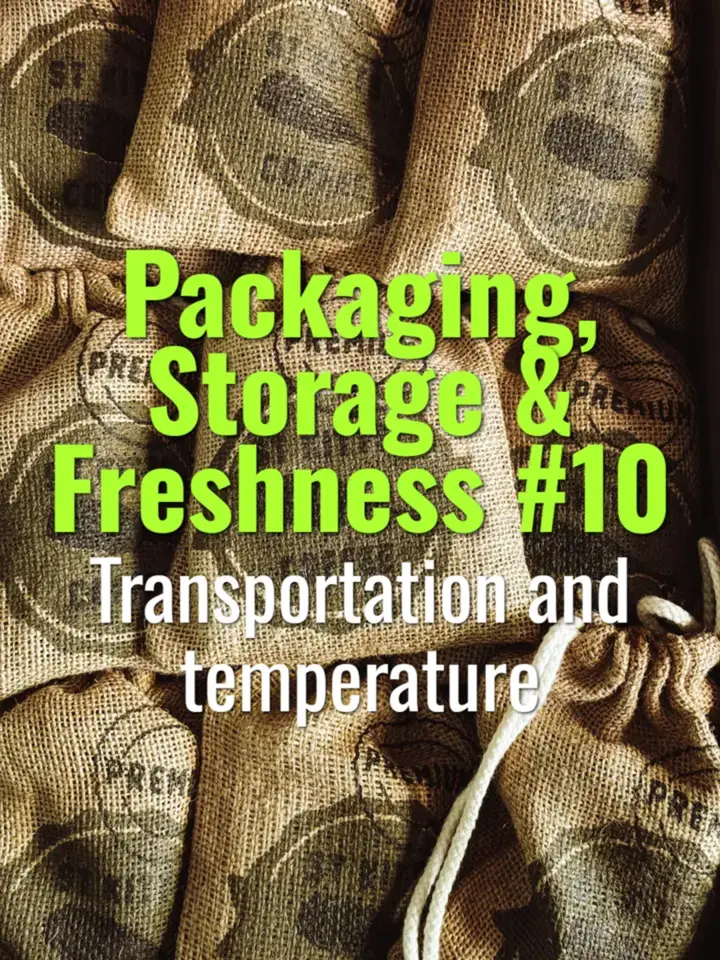Transportation and temperature
How transportation conditions, especially temperature and humidity control, affect roasted coffee freshness and quality during distribution.
- Coffee Basics Nerds
- 2 min read
Article 10 of 12 in Packaging, Storage & Freshness/

Transportation Challenges
- Coffee moves through multiple stages: roastery → warehouse → distributor → café/consumer.
- Along the way, exposure to heat, cold, and humidity fluctuations can accelerate staling.
Temperature Effects
- High heat (>30°C / 86°F): Speeds oxidation and rancidity of oils.
- Cold temperatures (<5°C / 41°F): Can cause condensation when moving back to warmer environments.
- Ideal Range: 15–25°C (59–77°F), stable with minimal fluctuation.
Humidity & Condensation
- High humidity risks moisture absorption in packaging.
- Condensation during transit can damage packaging integrity and encourage microbial growth.
- Barrier bags with valves and liners reduce vulnerability.
Packaging & Protection
- Use multi-layer foil or kraft laminate bags with one-way valves.
- Ship in corrugated cartons with liners for added insulation.
- Palletize loads to avoid direct floor contact and allow airflow.
Transport Modes
- Local Distribution: Vans/trucks—temperature varies with season.
- Long-Distance/Export: Containers risk heat buildup (“container rain”) if not ventilated.
- Solutions: Refrigerated transport for specialty lots; insulated liners for containers.
Best Practices
- Keep storage and transit environments cool, dark, and dry.
- Minimize time coffee spends in uncontrolled transit.
- For sensitive, high-value lots, consider temperature and humidity loggers in shipments.
Summary
Transportation exposes roasted coffee to temperature swings and humidity risks that accelerate staling. By using protective packaging, stable conditions, and monitoring tools, roasters and distributors can preserve coffee’s freshness, aroma, and flavor integrity from roastery to cup.